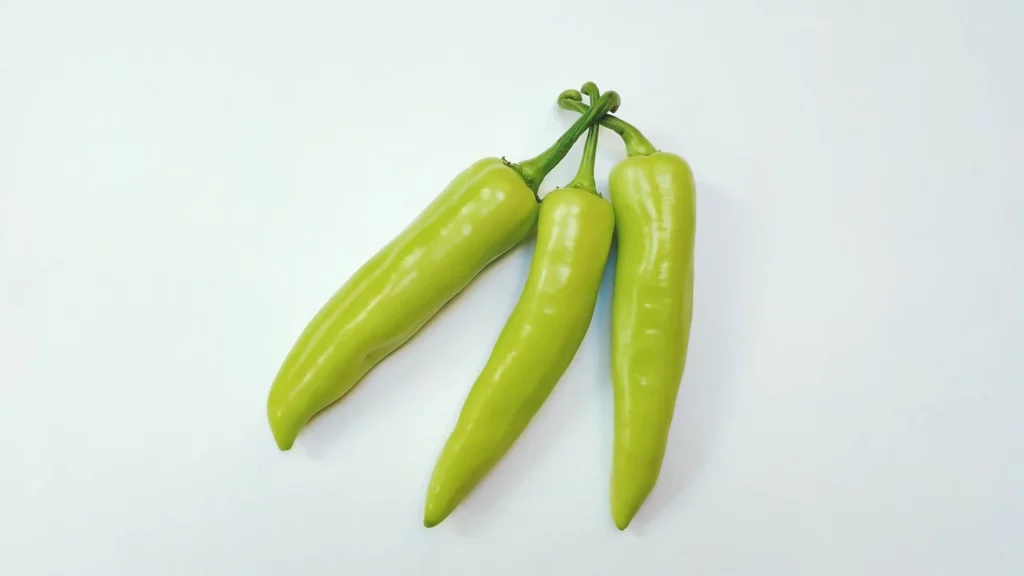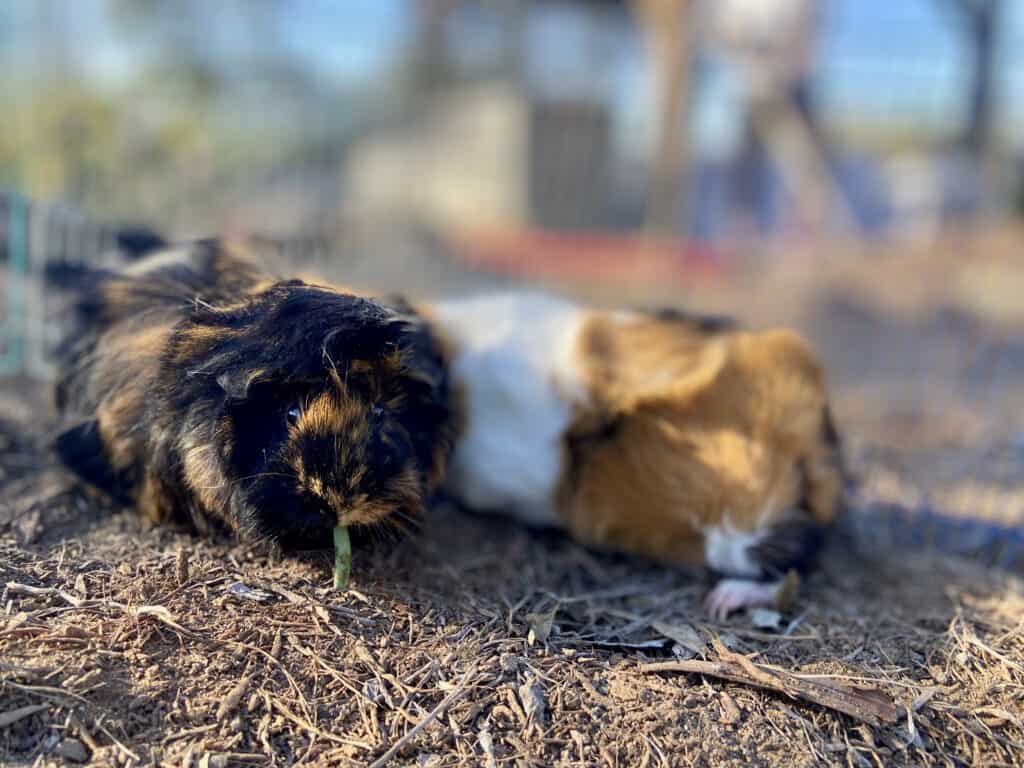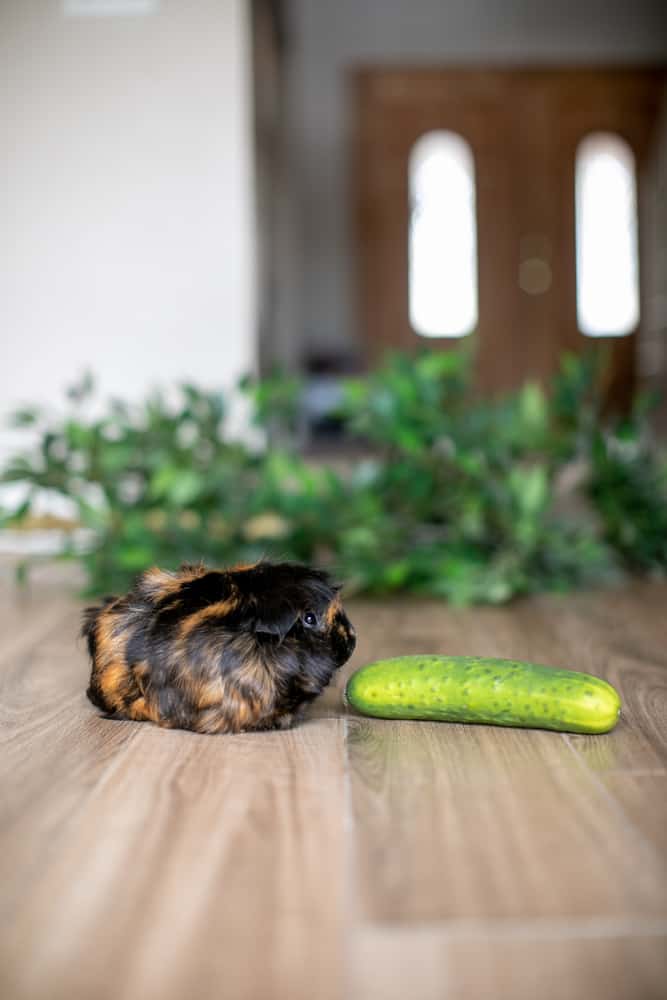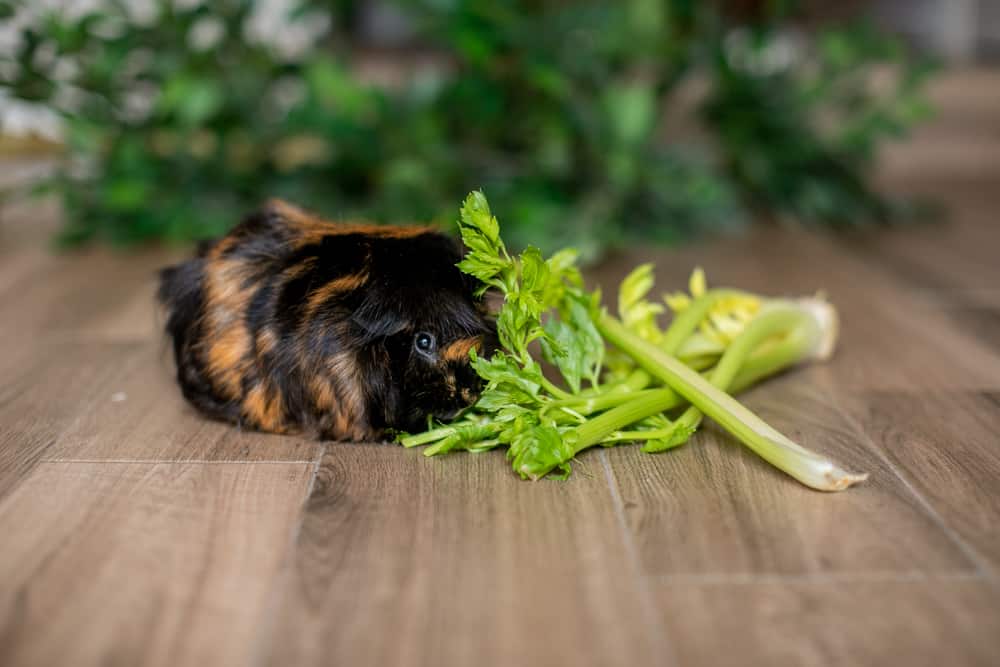As an Amazon Associate we earn from qualifying purchases.
Can guinea pigs eat banana peppers? The answer to this question is yes and no. It all depends on the type of banana pepper.
If you’re using sweet banana peppers, it is perfectly safe to add them to your guinea pig’s diet. However, if the banana pepper is a hot pepper, such as a jalapeno pepper, then it is not safe for your guinea pig to eat.
Read on to learn more about the different types of banana peppers and which ones are safe for your guinea pig to eat.
Are Banana Peppers Safe For Guinea Pigs To Eat?
If you’re still wondering “can guinea pigs eat banana peppers?” yes, banana peppers (also known as yellow peppers) are safe for your cavy to eat, as long as they’re the sweet variety. Your guinea pigs can enjoy the sweet taste of sweet banana peppers as part of their regular diet.

Banana peppers are a type of bell pepper that is sweet and mild in flavor. They can be eaten raw or cooked, and are a good source of vitamin C and other nutrients.
Bell peppers, including yellow peppers, are a healthy snack option for your guinea pig. They provide a good source of fiber, vitamins, and minerals, and can help to keep your guinea pig healthy and happy.
On the other hand, jalapeno peppers and yellow bell peppers are not recommended to be added to a guinea pig’s diet. These are high in acidity and can cause stomach upset in your guinea pig. Orange bell peppers are a better option as they are lower in acidity and can be safely eaten.
If you’re feeding your guinea pig banana peppers, it’s best to give them only a small amount at first to see how they react. Some guinea pigs may be sensitive to the spice of these peppers, so it’s best to start with a small amount and increase the amount gradually over time.
Side Effects of Feeding Banana Peppers To Your Guinea Pigs
When it comes to feeding yellow peppers to your guinea pigs, there can be some potential side effects. While banana peppers are generally safe to eat, they can cause some digestive upset in some pigs.
If your guinea pig experiences any diarrhea, vomiting, or other gastrointestinal issues after eating banana peppers, you should discontinue feeding them this fruit and consult your veterinarian.
Here are some side effects that can occur in guinea pigs who eat yellow peppers:

- Burning sensation: If your guinea pig eats excessive amounts of yellow peppers, it can experience a burning sensation in its mouth and throat. This is due to the capsaicinoids present in these peppers.
- Indigestion: Some guinea pigs may experience indigestion after eating yellow peppers. This can manifest as diarrhea, vomiting, or other gastrointestinal issues. If your guinea pig has any of these symptoms after eating banana peppers, discontinue feeding them this fruit and consult your veterinarian.
- Allergic reactions: In rare cases, some guinea pigs may have an allergic reaction to yellow peppers. This can manifest as hives, swelling, difficulty breathing, or other severe reactions. If you notice any of these symptoms in your guinea pig after they eat banana peppers, immediately stop feeding them this fruit and seek emergency veterinary care.
- Diarrhea: Diarrhea can occur in guinea pigs who eat banana peppers. This is usually not a severe side effect and will resolve on its own, but if your guinea pig has persistent or severe diarrhea, you should discontinue feeding them this fruit and consult your veterinarian.
- Gastrointestinal upset: Some guinea pigs may experience gastrointestinal upset after eating yellow peppers. This can manifest as diarrhea, vomiting, or other gastrointestinal issues.
If your guinea pig has any of these symptoms after eating yellow peppers, discontinue feeding them this fruit and consult your veterinarian.
What Causes The Burning Sensation When Eating Banana Peppers?
Banana peppers contain a chemical named capsaicin. This chemical can cause a burning sensation in the mouth and throat when consumed in large quantities.
The capsaicinoids present in these peppers can also irritate the digestive system, which can lead to indigestion, diarrhea, or vomiting.
How Much Banana Pepper Can A Guinea Pig Eat?
Guinea pigs can sometimes eat yellow peppers, but they should only consume a small amount at a time. Too much can cause digestive upset or other side effects.
When feeding guinea pigs yellow peppers, start with a small piece and see how they tolerate it. If they seem to enjoy it and have no adverse reactions, you can give them a little more the next time.

Banana Pepper Alternatives For Guinea Pigs
Banana peppers can be a nutritious and tasty treat, but they can also be a bit spicy. If your guinea pig is not used to spicy foods, start with small amounts and work your way up.
Some other pepper varieties that guinea pigs can safely eat include bell peppers and poblanos. These peppers can all be chopped into small pieces and fed to your guinea pig as a snack or added to their regular diet.
Bell peppers are an excellent option for your cavy because they are low in spice and high in nutritional value. Some benefits of feeding bell peppers to your guinea pig include:
- Boosting their immune system
- Providing them with essential vitamins
- Helping to prevent health problems
Poblano peppers are another type of pepper that you can feed to your cavy. These peppers can be a bit spicier than bell peppers, so start with small amounts and work your way up.
Poblano peppers can offer the same health benefits as bell peppers, so they are a great addition to your guinea pig’s diet.
When feeding any type of pepper to your guinea pig, it is important to wash the pepper first and remove the seeds. Seeds can be harmful and can cause digestive problems in a guinea pig.
Other Healthy Vegetables To Feed Your Guinea Pig
Apart from the peppers mentioned above, there are many healthy veggies you can add to your guinea pig’s diet. These include:

- Celery: Remove the strings from the celery and chop it into small pieces before feeding it to your guinea pig.
- Kale: Kale is a leafy green vegetable that is full of nutrients. Remove the tough stems from the kale and chop it into small pieces before feeding it to your guinea pig.
- Cucumber: Cucumbers can be a refreshing treat for your guinea pig. Remove the seeds from the cucumber and chop it into small pieces before feeding it to your guinea pig.
- Zucchini: Zucchini is another vegetable that guinea pigs can enjoy. To feed your guinea pig zucchini, remove the seeds and chop it into small pieces.
All of these vegetables are packed with nutrients and vitamins that are essential for a guinea pig’s diet. In addition, they are also a great source of fiber which is important for a guinea pig’s digestive system.
Are Bananas Safe For Guinea Pigs To Eat?
Yes, guinea pigs can safely eat bananas, but they should only consume them in moderation. Bananas are a good source of vitamins and minerals, but they’re also high in sugar.
Too much sugar can lead to obesity and other health problems in guinea pigs. When feeding bananas to your guinea pig, start with a small piece and see how they react.
If they seem to enjoy it and have no adverse effects, you can continue feeding them small pieces of banana as a treat. Just be sure not to overdo it!
Bottom Line — Can Guinea Pigs Eat Banana Peppers?
To sum it up, guinea pigs may technically eat banana peppers, but you should err on the side of caution and feed your guinea pigs other types of peppers instead, such as those included in the Capsicum family. Sweet peppers can be enjoyed as a snack or added to meals. Be sure to wash any peppers before feeding them to your guinea pig!